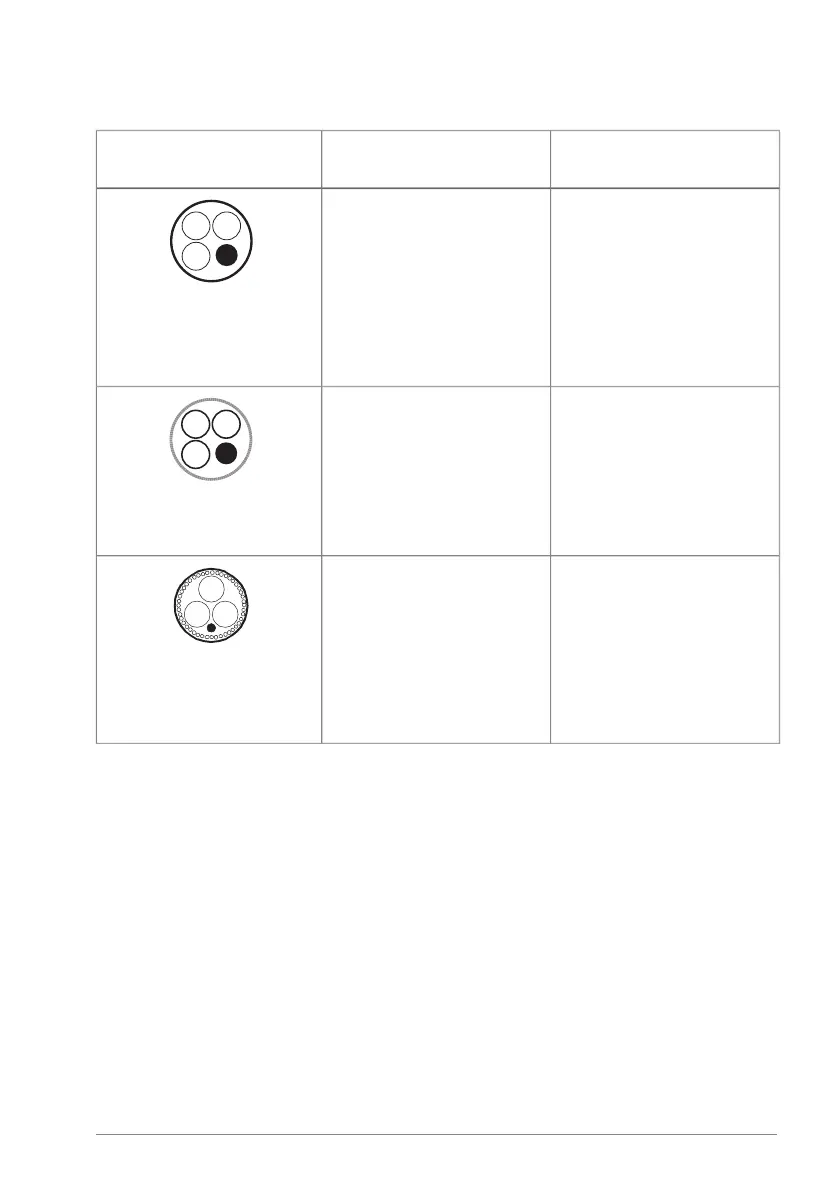Alternate power cable types
Use as motor cabling and as
brake resistor cabling
Use as input power cablingCable type
Yes with phase conductor
smaller than 10 mm
2
(8 AWG)
Cu, or motors up to 30 kW
(40 hp).
Yes with phase conductor
smaller than 10 mm
2
(8 AWG)
Cu.
Note: Shielded or armored
cable, or cabling in metal
conduit is always recommen-
ded to minimize radio fre-
quency interference.
Four-conductor cable in
plastic jacket (three phase
conductors and PE)
Yes with phase conductor
smaller than 10 mm
2
(8 AWG)
Cu, or motors up to 30 kW
(40 hp)
Yes
Four-conductor armored
cable (three phase conduct-
ors and PE)
Yes with motors up to 100 kW
(135 hp). A potential equaliza-
tion between the frames of
motor and driven equipment
is required.
Yes
Shielded (Al/Cu shield or ar-
mor)
1)
four-conductor cable
(three phase conductors and
a PE)
1)
Armor may act as an EMC shield, as long as it provides the same performance as a concentric EMC
shield of a shielded cable. To be effective at high frequencies, the shield conductivity must be at least
1/10 of the phase conductor conductivity. The effectiveness of the shield can be evaluated based on
the shield inductance, which must be low and only slightly dependent on frequency. The requirements
are easily met with a copper or aluminum shield/armor. The cross-section of a steel shield must be
ample and the shield helix must have a low gradient. A galvanized steel shield has a better high-frequency
conductivity than a non-galvanized steel shield.
Guidelines for planning the electrical installation 47
